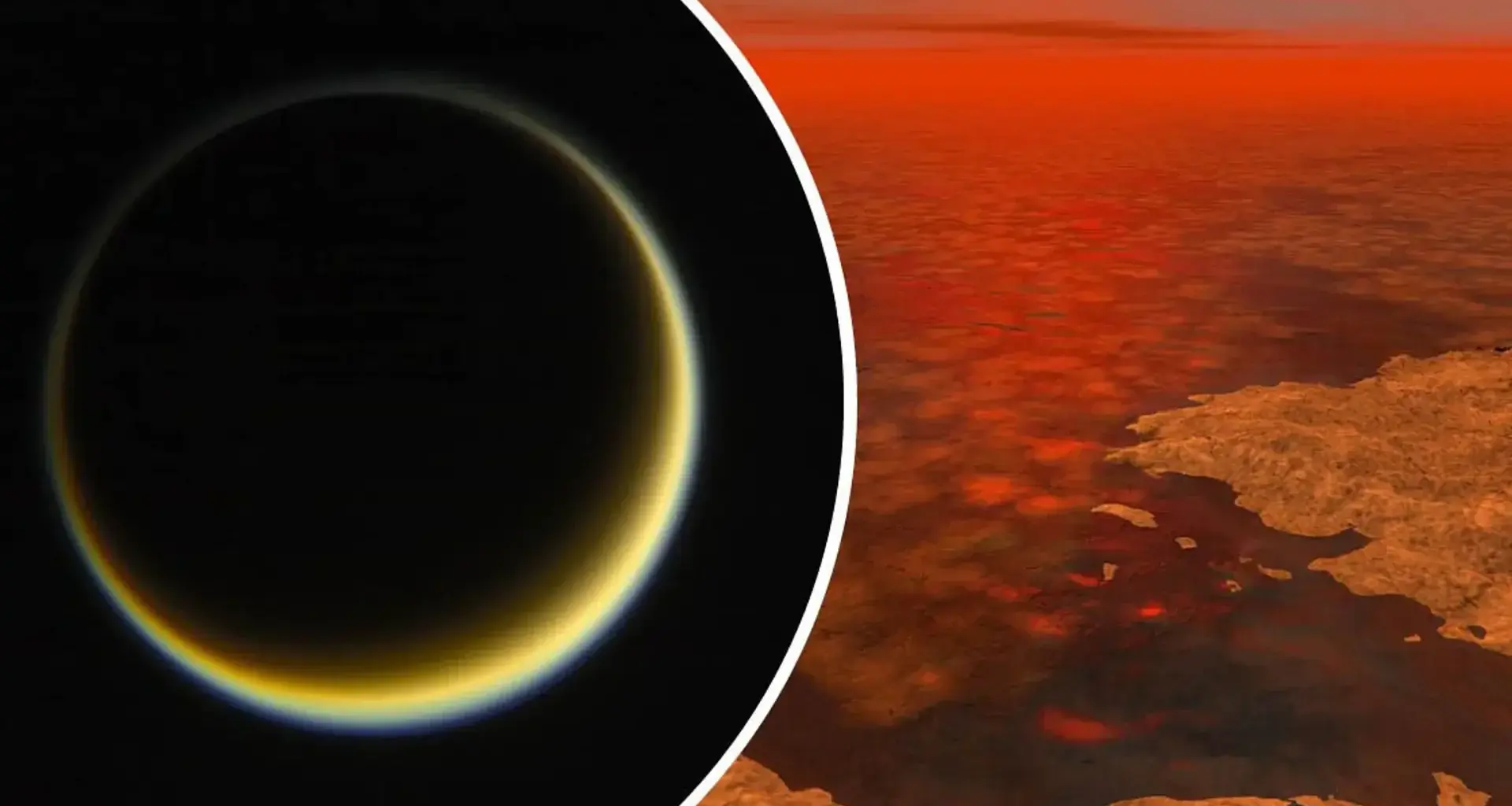For decades, chemistry students have learned a simple truth: polar and nonpolar substances don’t mix. Water and oil stay apart. But researchers from Chalmers University in Sweden and NASA’s Jet Propulsion Laboratory have just proved that this long-standing rule doesn’t always apply—at least not on the icy surface of Saturn’s largest moon, Titan.
Their unexpected discovery reveals that methane and ethane, two nonpolar hydrocarbons, can combine with hydrogen cyanide, a compound more polar than water, under extreme cold. This unlikely partnership could help explain Titan’s strange chemistry and even shed light on the origins of life itself.
When “Like Dissolves Like” Doesn’t Hold
At temperatures near –180 degrees Celsius, Titan’s methane-rich world creates a natural chemistry lab unlike any other. In such conditions, hydrogen cyanide forms a crystal, while methane and ethane remain liquid. When NASA scientists combined these molecules in the lab and studied them using laser spectroscopy, they found something surprising: the molecules stayed intact but behaved as if they had mixed.
Microscope images (10X) at 90 K of HCN crystals before (left) and after (right) the addition of ethane and methane. (CREDIT: PNAS)
The team turned to Martin Rahm, an associate professor at Chalmers University of Technology, to make sense of the data. His group used high-performance computer simulations to test thousands of molecular arrangements. The results showed that methane and ethane molecules had actually inserted themselves into the crystal structure of hydrogen cyanide, forming stable new compounds called co-crystals.
“This led to an exciting theoretical and experimental collaboration between Chalmers and NASA,” Rahm said. “The question we asked ourselves was a bit crazy: Can the measurements be explained by a crystal structure in which methane or ethane is mixed with hydrogen cyanide? This contradicts a rule in chemistry, ‘like dissolves like,’ which basically means that it should not be possible to combine these polar and nonpolar substances.”
A Glimpse Into Titan’s Alien Chemistry
Titan has long captured scientists’ imaginations. Shrouded in a dense orange haze of nitrogen and methane, the moon is a frozen world with rivers, lakes, and seas made of liquid hydrocarbons. Its environment may resemble Earth’s primordial past, offering a glimpse into how the building blocks of life once formed here.
Hydrogen cyanide, in particular, plays a starring role in prebiotic chemistry. On Earth, it’s thought to have helped form amino acids and nucleobases—the foundation of proteins and DNA. Yet on Titan, scientists have puzzled over what happens to hydrogen cyanide once it’s created in the upper atmosphere. Does it pile up on the surface? Or does it react with other chemicals in ways we’ve never seen before?
High resolution Raman spectra of pure HCN (blue), pure methane (orange) and presumptive HCN:methane co-crystal (black). (CREDIT: PNAS)
The new research suggests the latter. If methane and ethane can mix with hydrogen cyanide in solid form, that could explain the moon’s puzzling surface chemistry. It might also mean Titan’s dunes, lakes, and icy crust hold far more complex materials than expected.
“The discovery of the unexpected interaction between these substances could affect how we understand Titan’s geology and its strange landscapes of lakes, seas and sand dunes,” Rahm said. “In addition, hydrogen cyanide is likely to play an important role in the abiotic creation of several of life’s building blocks.”
Chemistry Beyond Earth
To confirm their findings, the Chalmers team simulated Titan’s extreme environment. Their calculations not only showed that these unusual co-crystals can exist under Titan-like conditions, but also that the way they absorb light matched NASA’s experimental data perfectly.
“This can happen at very low temperatures, like those on Titan,” Rahm explained. “Our calculations predicted not only that the unexpected mixtures are stable under Titan’s conditions, but also spectra of light that coincide well with NASA’s measurements.”
The discovery pushes the boundaries of what scientists thought was possible in solid-state chemistry. “I see it as a nice example of when boundaries are moved in chemistry and a universally accepted rule does not always apply,” Rahm said.
High resolution Raman spectra of pure HCN (blue) and presumptive HCN:propane cocrystal (black). (CREDIT: PNAS)
NASA’s upcoming Dragonfly mission, expected to arrive on Titan in 2034, could provide a chance to test these ideas directly. The rotorcraft lander will explore the moon’s surface, searching for organic molecules and signs of prebiotic chemistry. Until then, Rahm and his colleagues plan to keep investigating hydrogen cyanide and its behavior in frigid environments.
The Broader Cosmic Connection
Hydrogen cyanide isn’t unique to Titan. It’s found across the cosmos—in dust clouds, comets, and planetary atmospheres. If these new co-crystal formations can occur elsewhere, the implications are enormous. It could mean that the chemistry that once sparked life on Earth may also be quietly unfolding in the cold corners of the universe.
“The findings of our study may help us understand what happens in other cold environments in space,” Rahm said. “And we may be able to find out if other nonpolar molecules can also enter the hydrogen cyanide crystals and, if so, what this might mean for the chemistry preceding the emergence of life.”
Practical Implications of the Research
This discovery offers a new way to think about chemical interactions in the universe. By proving that polar and nonpolar molecules can mix under extreme cold, the study expands the rules of chemistry and opens new pathways for understanding prebiotic evolution.
Effect of temperature on HCN:hydrocarbon co-crystal Raman spectra. Left: Spectral shifts for the HCN lattice mode (L1,) as the temperature is increased. Right: Spectral shifts for the CH stretch of HCN (𝜈2). (CREDIT: PNAS)
It could help scientists interpret the data that the Dragonfly mission will collect and guide future experiments on icy moons and exoplanets.
On a broader scale, the findings hint at how the first building blocks of life might form in seemingly inhospitable places—not just on Titan, but anywhere in the cosmos where chemistry can surprise us.
Research findings are available online in the journal PNAS.
Related Stories

